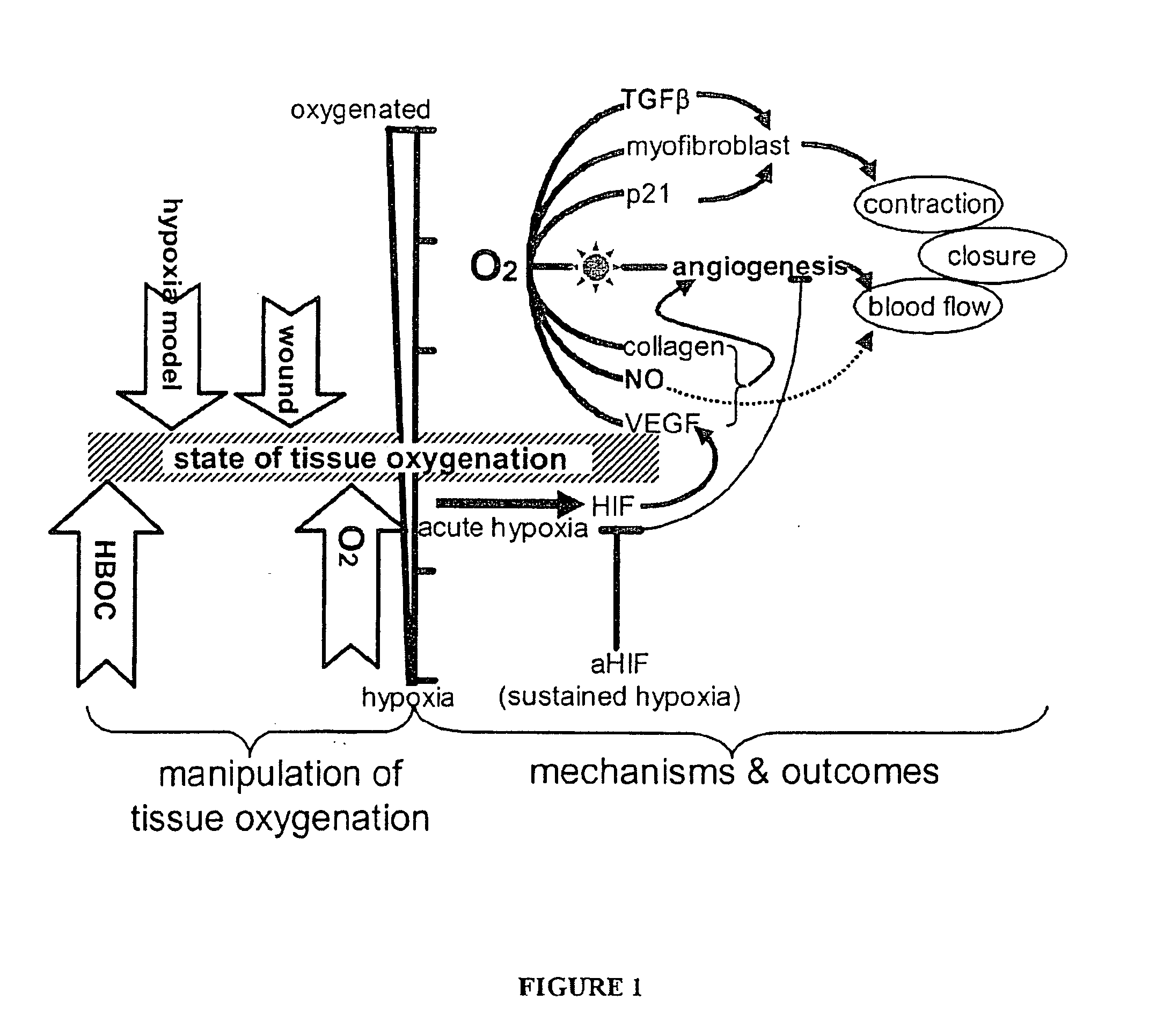Methods and compositions for the topical oxygenation of hypoxic tissue
a technology of topical oxygenation and hypoxic tissue, which is applied in the direction of drug compositions, peptide/protein ingredients, treatment rooms, etc., can solve the problems of limited proliferation of dermal cells, lack of efficient means of oxygenating wound tissue, tissue death and dysfunction, etc., to prolong shelf life, accelerate wound closure, and increase the po2 at the wound edg
- Summary
- Abstract
- Description
- Claims
- Application Information
AI Technical Summary
Benefits of technology
Problems solved by technology
Method used
Image
Examples
example 1
Study of Oxyb-Facilitated Wound Healing in Pigs
[0062]Before Oxyb is used for treating a wound, it is oxygenated by bubbling hypoxic Oxyb (HOxyb; pO2<5 mm) with pure oxygen for 5 minutes, followed by exposure to 100% oxygen (at 4 ATA) for 2 hours.
[0063]Pigs are sedated using Telazol (tiletamine and zolazepam, 6 mg / Kg). During wounding and treatment, animals are kept anesthetized with isoflurane via a face cone. The wound sites over the dorsal trunk area are shaved using a #40 clipper blade and the area cleaned with alcohol and Betadine solution. Ten dermal wounds (5 thoracic and 5 lumbar) are created using a #15 scalpel by removing a full-thickness 6.3 cm2 section of skin. Of the ten wounds, every alternate wound is topically treated with 0.5 mL of OOxyb prepared as previously described. The control wounds are treated with HOxyb. Wounds are treated for once daily for the first seven days after wounding. The daily treatment involves topical application of the Oxyb for three hours, fol...
PUM
| Property | Measurement | Unit |
|---|---|---|
| time | aaaaa | aaaaa |
| time | aaaaa | aaaaa |
| time | aaaaa | aaaaa |
Abstract
Description
Claims
Application Information
 Login to View More
Login to View More - R&D
- Intellectual Property
- Life Sciences
- Materials
- Tech Scout
- Unparalleled Data Quality
- Higher Quality Content
- 60% Fewer Hallucinations
Browse by: Latest US Patents, China's latest patents, Technical Efficacy Thesaurus, Application Domain, Technology Topic, Popular Technical Reports.
© 2025 PatSnap. All rights reserved.Legal|Privacy policy|Modern Slavery Act Transparency Statement|Sitemap|About US| Contact US: help@patsnap.com



